#Marcus Milton
Text

Squadron Sinister (2015) #2
5 notes
·
View notes
Text
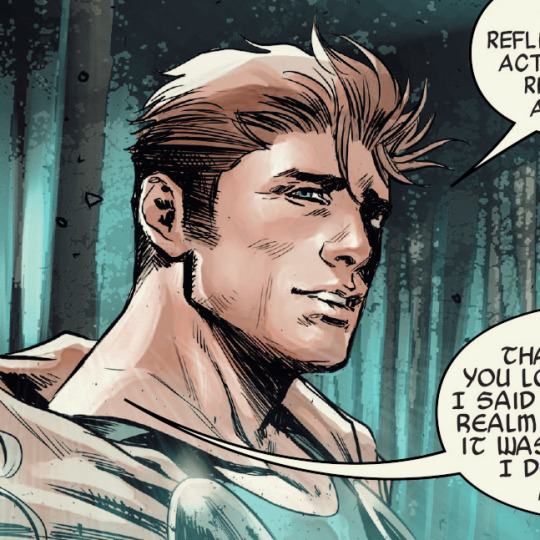




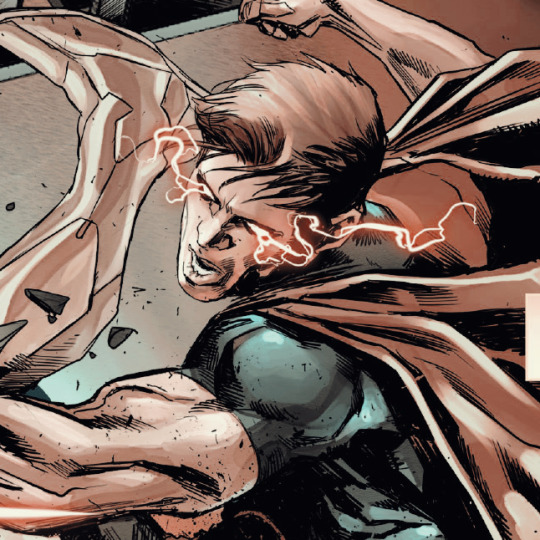


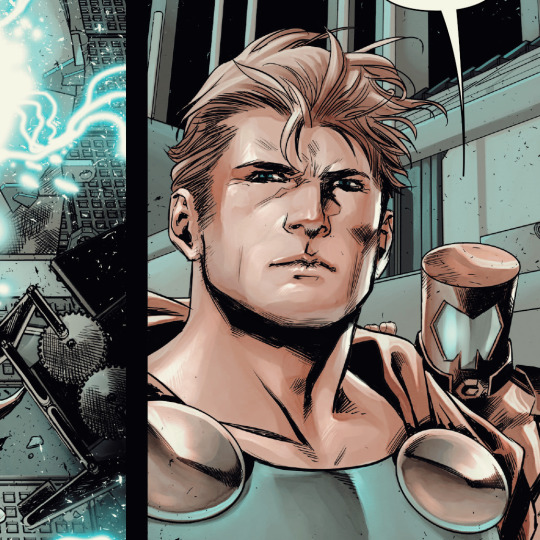
Hyperion (Avengers World) - Icons
Don't repost, that's not cool.
Like or Reblog if u Save.
#Hyperion icons#Marcus milton icons#Super hero icons#Avengers world icons#Marc milton icons#Squadron supreme icons#Comics icons#Comics edits#Marvel icons#Marvel comics#Marvel edits#Icons#Icons with psd#Squadron supreme#Hyperion#Marcus milton
57 notes
·
View notes
Photo

My acquisition of Hyperion sketch cover by Dave Castr
#Dave Castr#DCastr#art purchase#sketch cover#sketch cover art#Marvel Comics sketch cover#Marvel sketch cover#Hyperion#Zhib Ran#Squadron Sinister#Mark Milton#Squadron Supreme#Thunderbolts#Marcus Milton#Avengers#Marvel Comics#Marvel Comics art#comic art#comic book art#comics#comic books#Marvel Supervillains#supervillain#supervillain art#comic supervillain#comic villain#art#artwork#illustration
3 notes
·
View notes
Text

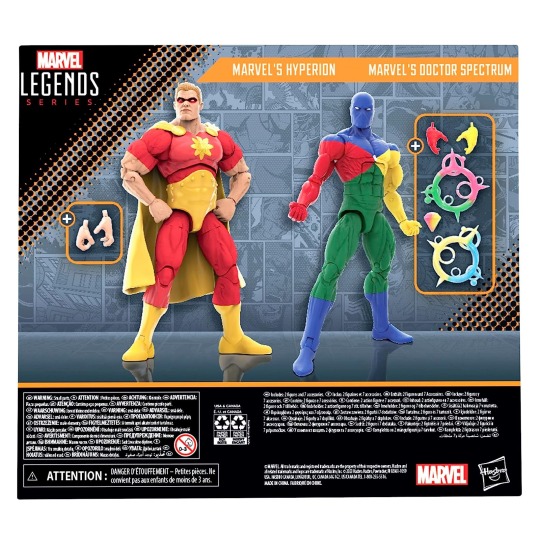



Marvel Legends Series Squadron Supreme Hyperion and Doctor Spectrum Hasbro F7037
Link para compra BR: https://amzn.to/3Dlj4lv
Buy here: https://amzn.to/46SfHjq
#marvel#marvel legends#hasbro#action figures#comics#squadron supreme#hyperion#doctor spectrum#2 pack#Marcus Milton#Joseph Ledger
0 notes
Video
youtube
If I Say by Mumford & Sons, live at WFUV
#music#mumford & sons#mumford and sons#marcus oliver johnstone mumford#marcus mumford#ted dwane#edward james milton dwane#ben lovett#benjamin walter david lovett#chris pollard#jim o'hara#video#wfuv#live session#dan tuozzoli#alexandra brennan#alexandra reilly#jeffrey pelayo
29 notes
·
View notes
Text
Holy shit, I'm so boredddd
I've watched the QuintonReviews nickelodeon saga, and I've finished them, and now I don't know what to do.
Sure, I could just go back to writing, but I hath not ideas. Which is super fun for me.
#you could leave requests if you want 👀#for non-ship concepts#or shop concepts for#chase x kaz#jordan x skylar#adam x owen#milton x jack#or#marcus x oliver#help#boredom#look. answering asks helps my boredom.#ask trash#trash talks
4 notes
·
View notes
Text

I literally missed fathers day but shoutout to my muses who don't have daddy issues and have good relationships with their dads and dad figures
#fathers day tw#✧˖*°࿐ Dakota Milton About // we’re BOMBSHELLS raisin' HELL now.#✧˖*°࿐ Noah Mandal About // fell asleep in my JACKET over hoodie over SHIRT.#✧˖*°࿐ Steven Universe About // ‘til i began to GROW. a power all MY OWN.#✧˖*°࿐ Anti Wanda About // turns out the VILLAIN is FUN to play.#✧˖*°࿐ Timmy Turner About // an AVERAGE kid that NO ONE understands.#✧˖*°࿐ Danny Fenton About // this is the DAWNING of the REST of our lives.#✧˖*°࿐ Leo Hamato About // playing DUMB but my PATIENCE wore thin.#✧˖*°࿐ Daichi Misawa About // the only one with COMMON SENSE.#✧˖*°࿐ Judai Yuki About // gasoline PUMPING through my VEINS.#✧˖*°࿐ Katsuki Bakugou About // i hope the SMOKE carries MY NAME.#✧˖*°࿐ Amadeus Cho About // they’re all WATCHING now. better show ‘em how.#✧˖*°࿐ Jaime Reyes About // so cut the ANCHOR on your HEART to be set free.#✧˖*°࿐ Jim Lake Jr About // you'll NEVER ever break my SOUL.#✧˖*°࿐ Monkie Kid About // everybodys always TALKING at you.#✧˖*°࿐ Chiro About // the voice of the UNHEARD. I gotta SPEAK it. BELIEVE it.#✧˖*°࿐ Cody Jones About // show me WHAT it's for. make me UNDERSTAND it.#✧˖*°࿐ Aedan Cavanaugh About // i will SHIELD you from the WAVES.#✧˖*°࿐ Millie Bolton About // i will draw my SWORD & FIGHT.#✧˖*°࿐ Marcus Haprele About // the only thing STOPPING me is me. YEAH.#✧˖*°࿐ Gal Alvarez About // i am a voice yet WAITING to be heard.#✧˖*°࿐ Liz Ruin About // here’s to never GROWING UP.#✧˖*°࿐ OOC // ROAD WORK ahead? uh i sure HOPE so.
1 note
·
View note
Photo

1 note
·
View note
Text
(Mostly) Lost, but Not Forgotten: Omar Khayyam (1923) / A Lover’s Oath (1925)

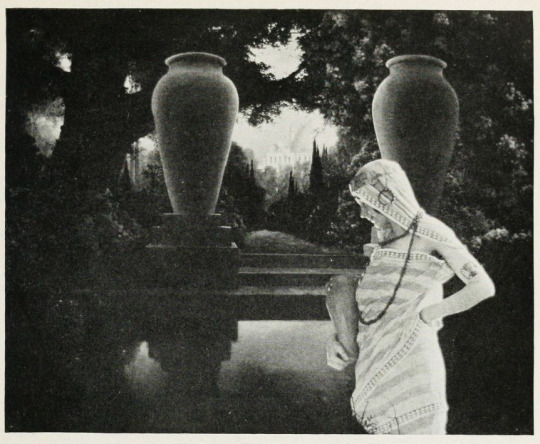
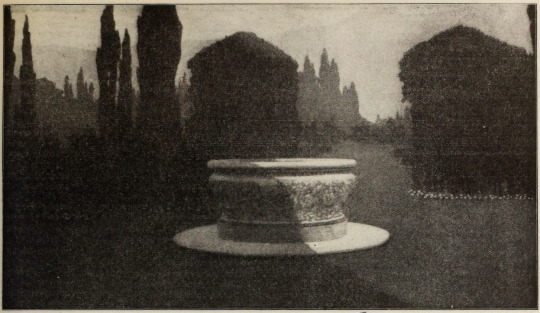

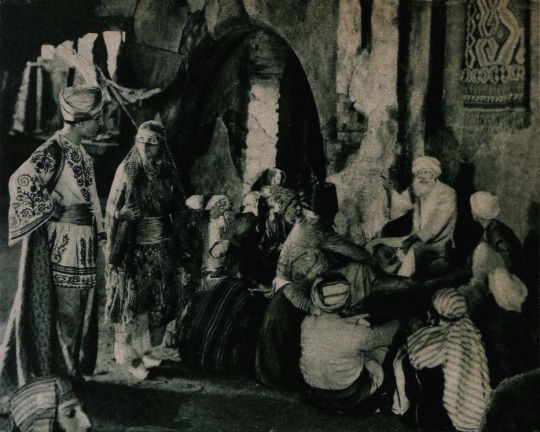
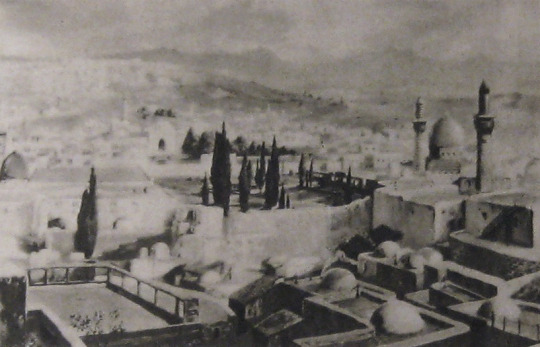

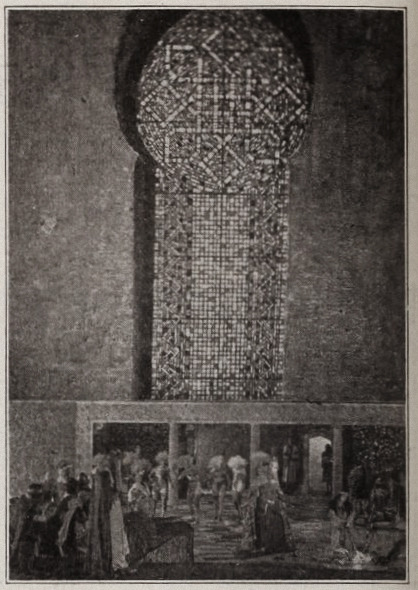
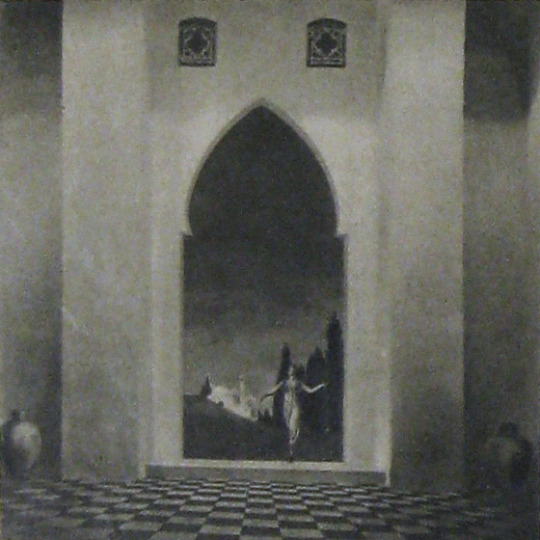



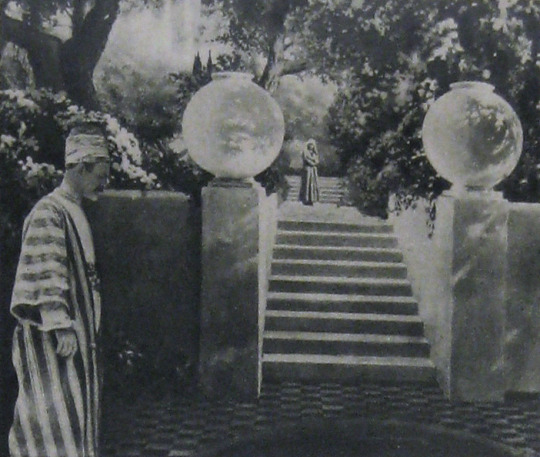
Alternate Titles: The Rubaiyat of Omar Khayyam, The Rubaiyat, Omar Khayyam, Omar
Direction: Ferdinand Pinney Earle; assisted by Walter Mayo
Scenario: Ferdinand P. Earle
Titles: Marion Ainslee, Ferdinand P. Earle (Omar), Louis Weadock (A Lover’s Oath)
Inspired by: The Rubaiyat of Omar Khayyam, as edited & translated by Edward FitzGerald
Production Manager: Winthrop Kelly
Camera: Georges Benoit
Still Photography: Edward S. Curtis
Special Photographic Effects: Ferdinand P. Earle, Gordon Bishop Pollock
Composer: Charles Wakefield Cadman
Editors: Arthur D. Ripley (The Rubaiyat of Omar Khayyam version), Ethel Davey & Ferdinand P. Earle (Omar / Omar Khayyam, the Director’s cut of 1922), Milton Sills (A Lover’s Oath)
Scenic Artists: Frank E. Berier, Xavier Muchado, Anthony Vecchio, Paul Detlefsen, Flora Smith, Jean Little Cyr, Robert Sterner, Ralph Willis
Character Designer: Louis Hels
Choreography: Ramon Novarro (credited as Ramon Samaniegos)
Technical Advisors: Prince Raphael Emmanuel, Reverend Allan Moore, Captain Dudley S. Corlette, & Captain Montlock or Mortlock
Studio: Ferdinand P. Earle Productions / The Rubaiyat, Inc. (Production) & Eastern Film Corporation (Distribution, Omar), Astor Distribution Corporation [States Rights market] (Distribution, A Lover’s Oath)
Performers: Frederick Warde, Edwin Stevens, Hedwiga Reicher, Mariska Aldrich, Paul Weigel, Robert Anderson, Arthur Carewe, Jesse Weldon, Snitz Edwards, Warren Rogers, Ramon Novarro (originally credited as Ramon Samaniegos), Big Jim Marcus, Kathleen Key, Charles A. Post, Phillippe de Lacy, Ferdinand Pinney Earle
Premiere(s): Omar cut: April 1922 The Ambassador Theatre, New York, NY (Preview Screening), 12 October 1923, Loew’s New York, New York, NY (Preview Screening), 2 February 1923, Hoyt’s Theatre, Sydney, Australia (Initial Release)
Status: Presumed lost, save for one 30 second fragment preserved by the Academy Film Archive, and a 2.5 minute fragment preserved by a private collector (Old Films & Stuff)
Length: Omar Khayyam: 8 reels , 76 minutes; A Lover’s Oath: 6 reels, 5,845 feet (though once listed with a runtime of 76 minutes, which doesn’t line up with the stated length of this cut)
Synopsis (synthesized from magazine summaries of the plot):
Omar Khayyam:
Set in 12th century Persia, the story begins with a preface in the youth of Omar Khayyam (Warde). Omar and his friends, Nizam (Weigel) and Hassan (Stevens), make a pact that whichever one of them becomes a success in life first will help out the others. In adulthood, Nizam has become a potentate and has given Omar a position so that he may continue his studies in mathematics and astronomy. Hassan, however, has grown into quite the villain. When he is expelled from the kingdom, he plots to kidnap Shireen (Key), the sheik’s daughter. Shireen is in love with Ali (Novarro). In the end it’s Hassan’s wife (Reicher) who slays the villain then kills herself.
A Lover’s Oath:
The daughter of a sheik, Shireen (Key), is in love with Ali (Novarro), the son of the ruler of a neighboring kingdom. Hassan covets Shireen and plots to kidnap her. Hassan is foiled by his wife. [The Sills’ edit places Ali and Shireen as protagonists, but there was little to no re-shooting done (absolutely none with Key or Novarro). So, most critics note how odd it is that all Ali does in the film is pitch woo, and does not save Shireen himself. This obviously wouldn’t have been an issue in the earlier cut, where Ali is a supporting character, often not even named in summaries and news items. Additional note: Post’s credit changes from “Vizier” to “Commander of the Faithful”]
Additional sequence(s) featured in the film (but I’m not sure where they fit in the continuity):
Celestial sequences featuring stars and planets moving through the cosmos
Angels spinning in a cyclone up to the heavens
A Potters’ shop sequence (relevant to a specific section of the poems)
Harem dance sequence choreographed by Novarro
Locations: palace gardens, street and marketplace scenes, ancient ruins


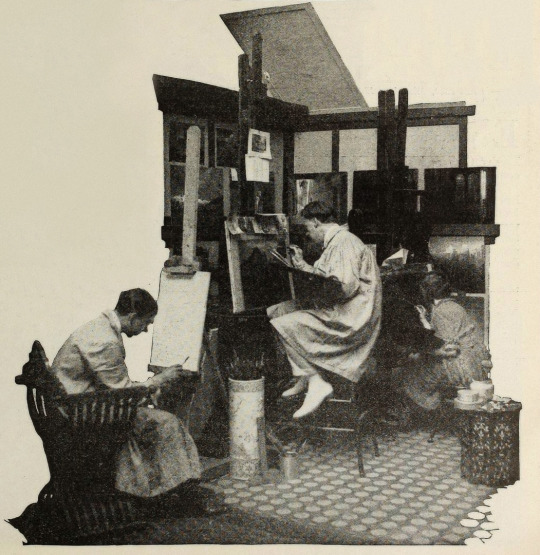


Points of Interest:
“The screen has been described as the last word in realism, but why confine it there? It can also be the last word in imaginative expression.”
Ferdinand P. Earle as quoted in Exhibitors Trade Review, 4 March 1922
The Rubaiyat of Omar Khayyam was a massive best seller. Ferdinand Pinney Earle was a classically trained artist who studied under William-Adolphe Bougueraeu and James McNeill Whistler in his youth. He also had years of experience creating art backgrounds, matte paintings, and art titles for films. Charles Wakefield Cadman was an accomplished composer of songs, operas, and operettas. Georges Benoit and Gordon Pollock were experienced photographic technicians. Edward S. Curtis was a widely renowned still photographer. Ramon Novarro was a name nobody knew yet—but they would soon enough.
When Earle chose The Rubaiyat as the source material for his directorial debut and collected such skilled collaborators, it seemed likely that the resulting film would be a landmark in the art of American cinema. Quite a few people who saw Earle’s Rubaiyat truly thought it would be:
William E. Wing writing for Camera, 9 September 1922, wrote:
“Mr. Earle…came from the world of brush and canvass, to spread his art upon the greater screen. He created a new Rubaiyat with such spiritual colors, that they swayed.”
…
“It has been my fortune to see some of the most wonderful sets that this Old Earth possesses, but I may truly say that none seized me more suddenly, or broke with greater, sudden inspiration upon the view and the brain, than some of Ferdinand Earle’s backgrounds, in his Rubaiyat.
“His vision and inspired art seem to promise something bigger and better for the future screen.”
As quoted in an ad in Film Year Book, 1923:
“Ferdinand Earle has set a new standard of production to live up to.”
Rex Ingram
“Fifty years ahead of the time.”
Marshall Neilan
The film was also listed among Fritz Lang’s Siegfried, Chaplin’s Gold Rush, Fairbanks’ Don Q, Lon Chaney’s Phantom of the Opera and The Unholy Three, and Erich Von Stroheim’s Merry Widow by the National Board of Review as an exceptional film of 1925.
So why don’t we all know about this film? (Spoiler: it’s not just because it’s lost!)
The short answer is that multiple dubious legal challenges arose that prevented Omar’s general release in the US. The long answer follows BELOW THE JUMP!
Earle began the project in earnest in 1919. Committing The Rubaiyat to film was an ambitious undertaking for a first-time director and Earle was striking out at a time when the American film industry was developing an inferiority complex about the level of artistry in their creative output. Earle was one of a number of artists in the film colony who were going independent of the emergent studio system for greater protections of their creative freedoms.
In their adaptation of The Rubaiyat of Omar Khayyam, Earle and Co. hoped to develop new and perfect existing techniques for incorporating live-action performers with paintings and expand the idea of what could be accomplished with photographic effects in filmmaking. The Rubaiyat was an inspired choice. It’s not a narrative, but a collection of poetry. This gave Earle the opportunity to intersperse fantastical, poetic sequences throughout a story set in the lifetime of Omar Khayyam, the credited writer of the poems. In addition to the fantastic, Earle’s team would recreate 12th century Persia for the screen.
Earle was convinced that if his methods were perfected, it wouldn’t matter when or where a scene was set, it would not just be possible but practical to put on film. For The Rubaiyat, the majority of shooting was done against black velvet and various matte photography and multiple exposure techniques were employed to bring a setting 800+ years in the past and 1000s of miles removed to life before a camera in a cottage in Los Angeles.
Note: If you’d like to learn a bit more about how these effects were executed at the time, see the first installment of How’d They Do That.
Unfortunately, the few surviving minutes don’t feature much of this special photography, but what does survive looks exquisite:

see all gifs here
Earle, knowing that traditional stills could not be taken while filming, brought in Edward S. Curtis. Curtis developed techniques in still photography to replicate the look of the photographic effects used for the film. So, even though the film hasn’t survived, we have some pretty great looking representations of some of the 1000s of missing feet of the film.
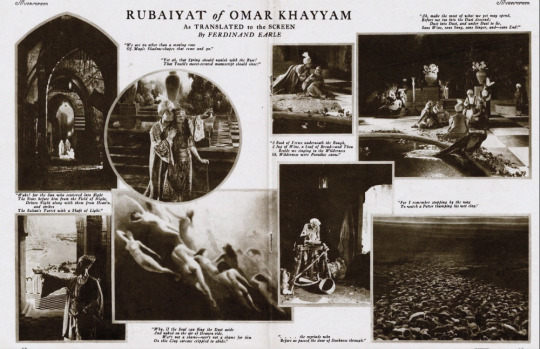
Nearly a year before Curtis joined the crew, Earle began collaboration with composer Charles Wakefield Cadman. In another bold creative move, Cadman and Earle worked closely before principal photography began so that the score could inform the construction and rhythm of the film and vice versa.
By the end of 1921 the film was complete. After roughly 9 months and the creation of over 500 paintings, The Rubaiyat was almost ready to meet its public. However, the investors in The Rubaiyat, Inc., the corporation formed by Earle to produce the film, objected to the ample reference to wine drinking (a comical objection if you’ve read the poems) and wanted the roles of the young lovers (played by as yet unknown Ramon Novarro and Kathleen Key) to be expanded. The dispute with Earle became so heated that the financiers absconded with the bulk of the film to New York. Earle filed suit against them in December to prevent them from screening their butchered and incomplete cut. Cadman supported Earle by withholding the use of his score for the film.
Later, Eastern Film Corp. brokered a settlement between the two parties, where Earle would get final cut of the film and Eastern would handle its release. Earle and Eastern agreed to change the title from The Rubaiyat of Omar Khayyam to simply Omar. Omar had its first official preview in New York City. It was tentatively announced that the film would have a wide release in the autumn.
However, before that autumn, director Norman Dawn launched a dubious patent-infringement suit against Earle and others. Dawn claimed that he owned the sole right to use multiple exposures, glass painting for single exposure, and other techniques that involved combining live action with paintings. All the cited techniques had been widespread in the film industry for a decade already and eventually and expectedly Dawn lost the suit. Despite Earle’s victory, the suit effectively put the kibosh on Omar’s release in the US.
Earle moved on to other projects that didn’t come to fruition, like a Theda Bara film and a frankly amazing sounding collaboration with Cadman to craft a silent-film opera of Faust. Omar did finally get a release, albeit only in Australia. Australian news outlets praised the film as highly as those few lucky attendees of the American preview screenings did. The narrative was described as not especially original, but that it was good enough in view of the film’s artistry and its imaginative “visual phenomena” and the precision of its technical achievement.
One reviewer for The Register, Adelaide, SA, wrote:
“It seems almost an impossibility to make a connected story out of the short verse of the Persian of old, yet the producer of this classic of the screen… has succeeded in providing an entertainment that would scarcely have been considered possible. From first to last the story grips with its very dramatic intensity.”
While Omar’s American release was still in limbo, “Ramon Samaniegos” made a huge impression in Rex Ingram’s Prisoner of Zenda (1922, extant) and Scaramouche (1923, extant) and took on a new name: Ramon Novarro. Excitement was mounting for Novarro’s next big role as the lead in the epic Ben-Hur (1925, extant) and the Omar project was re-vivified.

A new company, Astor Distribution Corp., was formed and purchased the distribution rights to Omar. Astor hired actor (note, not an editor) Milton Sills to re-cut the film to make Novarro and Key more prominent. The company also re-wrote the intertitles, reduced the films runtime by more than ten minutes, and renamed the film A Lover’s Oath. Earle had moved on by this point, vowing to never direct again. In fact, Earle was indirectly working with Novarro and Key again at the time, as an art director on Ben-Hur!
Despite Omar’s seemingly auspicious start in 1920, it was only released in the US on the states rights market as a cash-in on the success of one of its actors in a re-cut form five years later.
That said, A Lover’s Oath still received some good reviews from those who did manage to see it. Most of the negative criticism went to the story, intertitles, and Sills’ editing.
What kind of legacy could/should Omar have had? I’m obviously limited in my speculation by the fact that the film is lost, but there are a few key facts about the film’s production, release, and timing to consider.
The production budget was stated to be $174,735. That is equivalent to $3,246,994.83 in 2024 dollars. That is a lot of money, but since the production was years long and Omar was a period film set in a remote locale and features fantastical special effects sequences, it’s a modest budget. For contemporary perspective, Robin Hood (1922, extant) cost just under a million dollars to produce and Thief of Bagdad (1924, extant) cost over a million. For a film similarly steeped in spectacle to have nearly 1/10th of the budget is really very noteworthy. And, perhaps if the film had ever had a proper release in the US—in Earle’s intended form (that is to say, not the Sills cut)—Omar may have made as big of a splash as other epics.
It’s worth noting here however that there are a number of instances in contemporary trade and fan magazines where journalists off-handedly make this filmmaking experiment about undermining union workers. Essentially implying that that value of Earle’s method would be to continue production when unionized workers were striking. I’m sure that that would absolutely be a primary thought for studio heads, but it certainly wasn’t Earle’s motivation. Often when Earle talks about the method, he focuses on being able to film things that were previously impossible or impracticable to film. Driving down filming costs from Earle’s perspective was more about highlighting the artistry of his own specialty in lieu of other, more demanding and time-consuming approaches, like location shooting.
This divide between artists and studio decision makers is still at issue in the American film and television industry. Studio heads with billion dollar salaries constantly try to subvert unions of skilled professionals by pursuing (as yet) non-unionized labor. The technical developments of the past century have made Earle’s approach easier to implement. However, just because you don’t have to do quite as much math, or time an actor’s movements to a metronome, does not mean that filming a combination of painted/animated and live-action elements does not involve skilled labor.
VFX artists and animators are underappreciated and underpaid. In every new movie or TV show you watch there’s scads of VFX work done even in films/shows that have mundane, realistic settings. So, if you love a film or TV show, take the effort to appreciate the work of the humans who made it, even if their work was so good you didn’t notice it was done. And, if you’ve somehow read this far, and are so out of the loop about modern filmmaking, Disney’s “live-action” remakes are animated films, but they’ve just finagled ways to circumvent unions and low-key delegitimize the skilled labor of VFX artists and animators in the eyes of the viewing public. Don’t fall for it.
VFX workers in North America have a union under IATSE, but it’s still developing as a union and Marvel & Disney workers only voted to unionize in the autumn of 2023. The Animation Guild (TAG), also under the IATSE umbrella, has a longer history, but it’s been growing rapidly in the past year. A strike might be upcoming this year for TAG, so keep an eye out and remember to support striking workers and don’t cross picket lines, be they physical or digital!
Speaking of artistry over cost-cutting, I began this post with a mention that in the early 1920s, the American film industry was developing an inferiority complex in regard to its own artistry. This was in comparison to the European industries, Germany’s being the largest at the time. It’s frustrating to look back at this period and see acceptance of the opinion that American filmmakers weren’t bringing art to film. While yes, the emergent studio system was highly capitalistic and commercial, that does not mean the American industry was devoid of home-grown artists.
United Artists was formed in 1919 by Douglas Fairbanks, Charlie Chaplin, Mary Pickford, and D.W. Griffith precisely because studios were holding them back from investing in their art—within the same year that Earle began his Omar project. While salaries and unforgiving production schedules were also paramount concerns in the filmmakers going independent, a primary impetus was that production/distribution heads exhibited too much control over what the artists were trying to create.
Fairbanks was quickly expanding his repertoire in a more classical and fantastic direction. Cecil B. DeMille made his first in a long and very successful string of ancient epics. And the foreign-born children of the American film industry, Charlie Chaplin, Rex Ingram, and Nazimova, were poppin’ off! Chaplin was redefining comedic filmmaking. Ingram was redefining epics. Nazimova independently produced what is often regarded as America’s first art film, Salome (1923, extant), a film designed by Natacha Rambova, who was *gasp* American. Earle and his brother, William, had ambitious artistic visions of what could be done in the American industry and they also had to self-produce to get their work done.
Meanwhile, studio heads, instead of investing in the artists they already had contracts with, tried to poach talent from Europe with mixed success (in this period, see: Ernst Lubitsch, F.W. Murnau, Benjamin Christensen, Mauritz Stiller, Victor Sjöström, and so on). I’m in no way saying it was the wrong call to sign these artists, but all of these filmmakers, even if they found success in America, had stories of being hired to inject the style and artistry that they developed in Europe into American cinema, and then had their plans shot down or cut down to a shadow of their creative vision. Even Stiller, who tragically died before he had the opportunity to establish himself in the US, faced this on his first American film, The Temptress (1926, extant), on which he was replaced. Essentially, the studio heads’ actions were all hot air and spite for the filmmakers who’d gone independent.

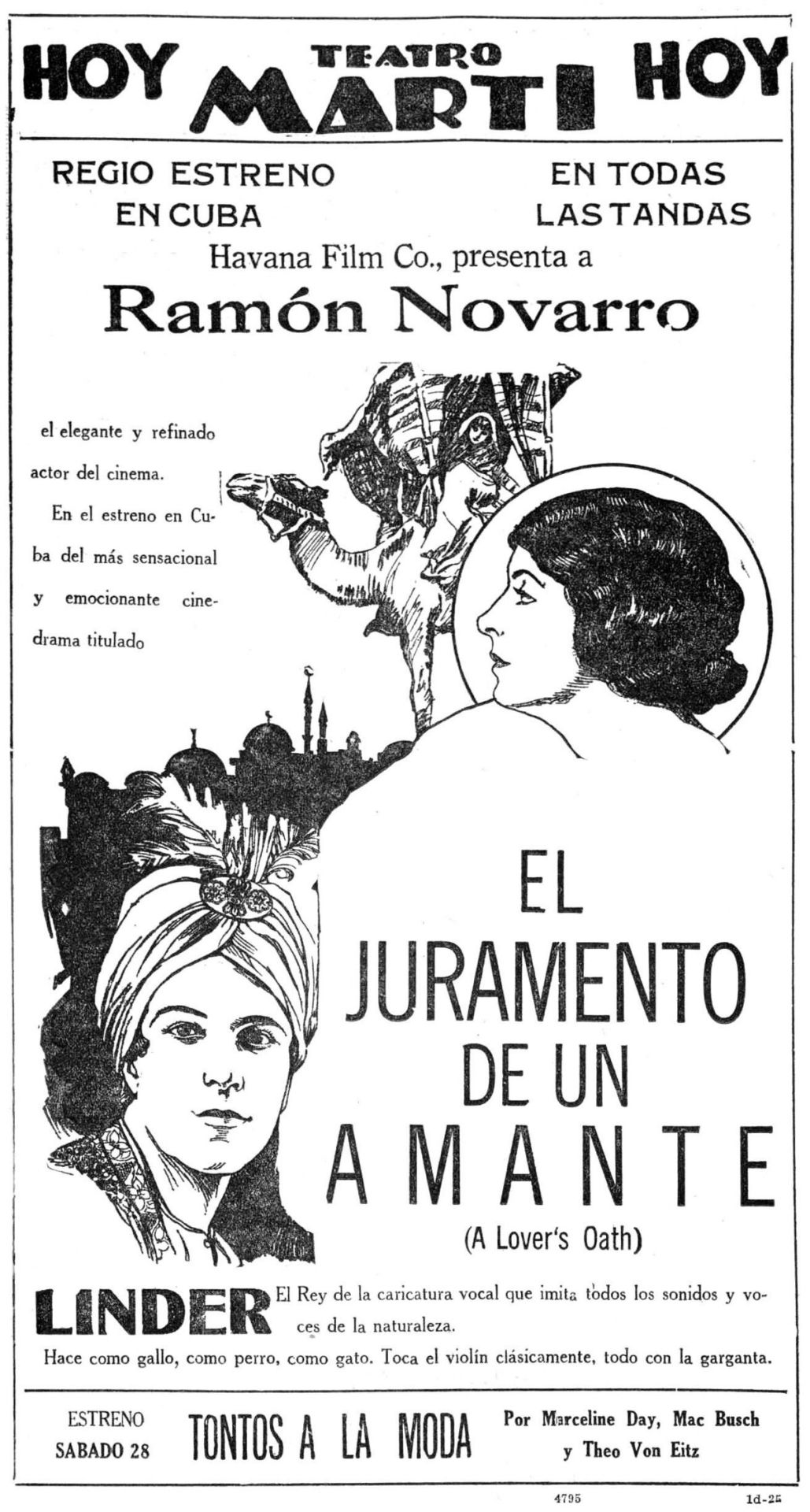
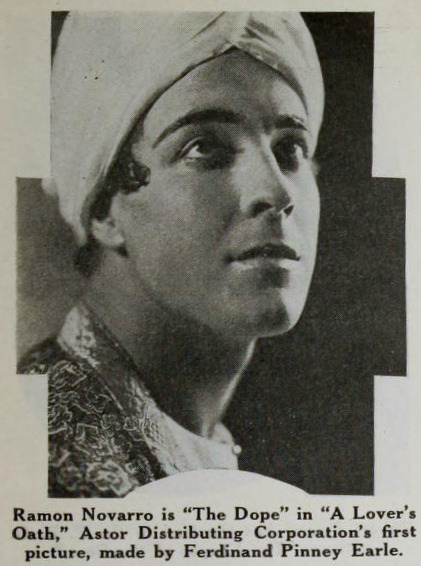
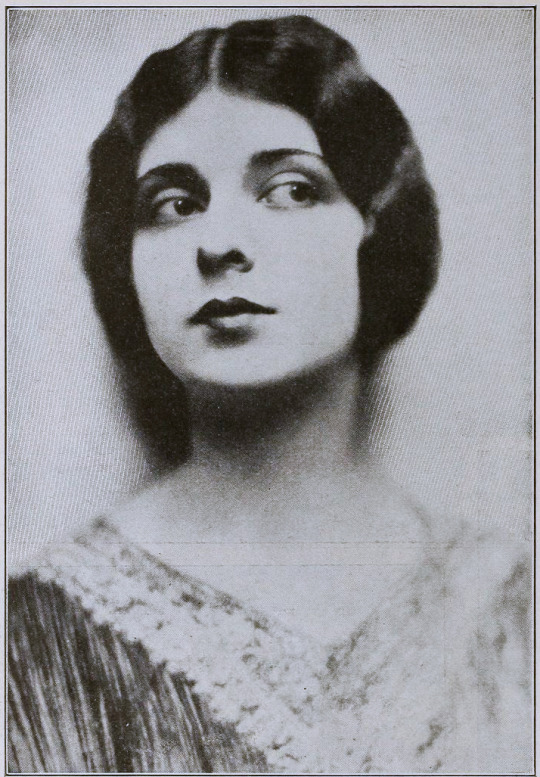
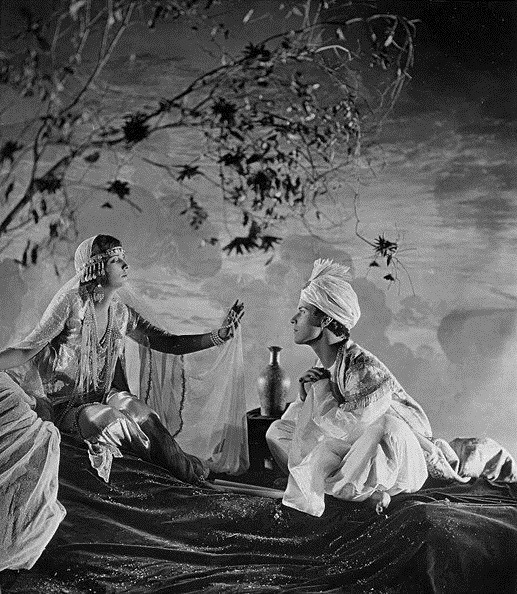
Finally I would like to highlight Ferdinand Earle’s statement to the industry, which he penned for from Camera in 14 January 1922, when his financial backers kidnapped his film to re-edit it on their terms:
MAGNA CHARTA
Until screen authors and producers obtain a charter specifying and guaranteeing their privileges and rights, the great slaughter of unprotected motion picture dramas will go merrily on.
Some of us who are half artists and half fighters and who are ready to expend ninety per cent of our energy in order to win the freedom to devote the remaining ten per cent to creative work on the screen, manage to bring to birth a piteous, half-starved art progeny.
The creative artist today labors without the stimulus of a public eager for his product, labors without the artistic momentum that fires the artist’s imagination and spurs his efforts as in any great art era.
Nowadays the taint of commercialism infects the seven arts, and the art pioneer meets with constant petty worries and handicaps.
Only once in a blue moon, in this matter-of-fact, dollar-wise age can the believer in better pictures hope to participate in a truely [sic] artistic treat.
In the seven years I have devoted to the screen, I have witnessed many splendid photodramas ruined by intruding upstarts and stubborn imbeciles. And I determined not to launch the production of my Opus No. 1 until I had adequately protected myself against all the usual evils of the way, especially as I was to make an entirely new type of picture.
In order that my film verison [sic] of the Rubaiyat of Omar Khayyam might be produced under ideal conditions and safeguarded from intolerable interferences and outside worries, I entered into a contract with the Rubaiyat, Inc., that made me not only president of the corporation and on the board of directors, but which set forth that I was to be author, production manager, director, cutter and film editor as well as art director, and that no charge could be made against the production without my written consent, and that my word was to be final on all matters of production. The late George Loane Tucker helped my attorney word the contract, which read like a splendid document.
Alas, I am now told that only by keeping title to a production until it is declared by yourself to be completed is it safe for a scenario writer, an actor or a director, who is supposedly making his own productions, to contract with a corporation; otherwise he is merely the servant of that corporation, subject at any moment to discharge, with the dubious redress of a suit for damages that can with difficulty be estimated and proven.
Can there be any hope of better pictures as long as contracts and copyrights are no protection against financial brigands and bullies?
We have scarcely emerged from barbarism, for contracts, solemnly drawn up between human beings, in which the purposes are set forth in the King’s plainest English, serve only as hurdles over which justice-mocking financiers and their nimble attorneys travel with impunity, riding rough shod over the author or artist who cannot support a legal army to defend his rights. The phrase is passed about that no contract is invioliable [sic]—and yet we think we have reached a state of civilization!
The suit begun by my attorneys in the federal courts to prevent the present hashed and incomplete version of my story from being released and exhibited, may be of interest to screen writers. For the whole struggle revolves not in the slightest degree around the sanctity of the contract, but centers around the federal copyright of my story which I never transferred in writing otherwise, and which is being brazenly ignored.
Imagine my production without pictorial titles: and imagine “The Rubaiyat” with a spoken title as follows, “That bird is getting to talk too much!”—beside some of the immortal quatrains of Fitzgerald!
One weapon, fortunately, remains for the militant art creator, when all is gone save his dignity and his sense of humor; and that is the rapier blade of ridicule, that can send lumbering to his retreat the most brutal and elephant-hided lord of finance.
How edifying—the tableau of the man of millions playing legal pranks upon men such as Charles Wakefield Cadman, Edward S. Curtis and myself and others who were associated in the bloody venture of picturizing the Rubaiyat! It has been gratifying to find the press of the whole country ready to champion the artist’s cause.
When the artist forges his plowshare into a sword, so to speak, he does not always put up a mean fight.
What publisher would dare to rewrite a sonnet of John Keats or alter one chord of a Chopin ballade?
Creative art of a high order will become possible on the screen only when the rights of established, independent screen producers, such as Rex Ingram and Maurice Tourneur, are no longer interferred with and their work no longer mutilated or changed or added to by vandal hands. And art dramas, conceived and executed by masters of screen craft, cannot be turned out like sausages made by factory hands. A flavor of individuality and distinction of style cannot be preserved in machine-made melodramas—a drama that is passed from hand to hand and concocted by patchworkers and tinkerers.
A thousand times no! For it will always be cousin to the sausage, and be like all other—sausages.
The scenes of a master’s drama may have a subtle pictorial continuity and a power of suggestion quite like a melody that is lost when just one note is changed. And the public is the only test of what is eternally true or false. What right have two or three people to deprive millions of art lovers of enjoying an artist’s creation as it emerged from his workshop?
“The Rubaiyat” was my first picture and produced in spite of continual and infernal interferences. It has taught me several sad lessons, which I have endeavored in the above paragraphs to pass on to some of my fellow sufferers. It is the hope that I am fighting, to a certain extent, their battle that has given me the courage to continue, and that has prompted me to write this article. May such hubbubs eventually teach or inforce a decent regard for the rights of authors and directors and tend to make the existence of screen artisans more secure and soothing to the nerves.
FERDINAND EARLE.
---
☕Appreciate my work? Buy me a coffee! ☕
Transcribed Sources & Annotations over on the WMM Blog!
See the Timeline for Ferdinand P. Earle's Rubaiyat Adaptation
#1920s#1923#1925#omar khayyam#ferdinand pinney earle#ramon novarro#independent film#american film#silent cinema#silent era#silent film#classic cinema#classic movies#classic film#film history#history#Charles Wakefield Cadman#cinematography#The Rubaiyat#cinema#film#lost film
41 notes
·
View notes
Text

Heroes Reborn (2021) #1
2 notes
·
View notes
Text
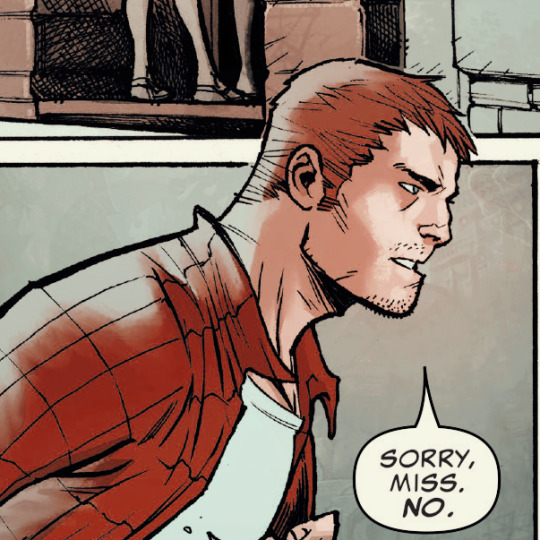





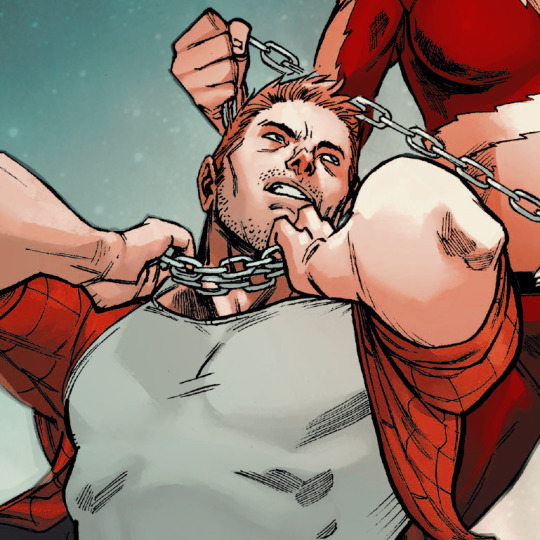


Hyperion (Marcus Milton) - Icons
Don't repost, that's not cool.
Like or Reblog if u Save.
#Hyperion icons#Marcus milton icons#Super hero icons#Comics icons#Comics edits#Marvel icons#Marvel comics#Marvel edits#Icons#Icons with psd#Marcus milton#Hyperion#Comics#Edits#With psd#Comicedit#Hyperion edit
30 notes
·
View notes
Text
NBA trade season 2k24: a summary
raptors - pacers
raptors get: bruce brown jr, 3 first round picks
pacers get: pascal siakam
hornets - heat
hornets get: kyle lowry, 2027 first round pick
heat get: terry rozier III
kyle lowry expected to get bought out by the hornets
jazz - pistons
pistons get: simone fonteccio
jazz get: kevin knox, 2024 second round pick
celtics - grizzlies (war flashbacks lol)
celtics get: xavier tillman
grizzlies get: 2 second round picks (2027 via atlanta, 2030 via dallas), lamar stevens
timberwolves - pistons
pistons get: shake milton, troy brown, 2030 second round pick
timberwolves get: monte morris
pacers - sixers - spurs
sixers get: buddy hield
pacers get: doug mcdermott, furkan korkmaz, 3 second round picks
spurs get: marcus morris, second round pick
furkan korkmaz to be waived by the pacers
jazz - raptors
raptors get: kelly olynyk, ochai agbaji
jazz get: kira lewis, otto porter jr, 2024 first round pick
thunder - hornets
thunder get: gordon hayward, vasilije micic, draft compensation
hornets get: tre mann, davis bertans
pistons - knicks
knicks get: alec burks, bojan bogdanovic
pistons get: quentin grimes, malachi flynn, evan fournier, ryan arcidiacono, 2 second round picks
wizards - mavs
wiz get: richaun holmes, draft compensation
mavs get: daniel gafford
raptors - nets
raptors get: spencer dinwiddie
nets get: dennis schroder, thad young
spencer dinwiddie likely to get waived by the raptors
hornets - mavs
mavs get: PJ washington
hornets get: grant williams, seth curry, 2027 first round pick
sixers - bucks
bucks get: pat bev
sixers get: cam payne, 2027 second round pick
bucks - kings
kings get: robin lopez, cash
robin lopez to be waived by the kings
sixers - celtics
celtics get: jaden springer
sixers get: second round pick
celtics - blazers
celtics get: protected second round pick
blazers get: dalano banton
grizzlies - nets - suns
grizzlies get: pick swap (suns), yuta watanabe, chimezie metu
nets get: second round pick, keita bates-diop, jordan goodwin
suns get: royce o'neale, david roddy
warriors - pacers
warriors get: second round pick, cash
pacers get: cory joseph
waived (so far):
danuel house jr (pistons)
killian hayes (pistons)
james bouknight (hornets)
victor oladipo (grizzlies)
christian koloko (raptors)
#welp. pretty uneventful trade deadline compared to prior seasons lol#the siakam and rozier trades didn't really happen during the deadline week by I thought I should include them just to be sure#anyway my biggest takeaways from today are: grant sucks (been saying it lol) and I hope the bucks sixers knicks fight to the death in the p#ayoffs lol#trade deadline 2k24#*#nba
23 notes
·
View notes
Text
Hello! I'm M.L. Nolan, aka., The_Kickit_Domain on AO3, and this is my masterpost!

First, I have an M/NB contemporary romcom book out called Love, Lies, and Cryptids.
One minute, Nico Juárez is enjoying the stability of their job as senior editor at Unified Theory Press, a publishing house specializing in books about the paranormal. The next minute, they're stuck with a terrible new boss and a clueless (yet uncomfortably cute) new assistant. Jasper Milton just wanted healthcare and to keep his sexy side-hustle a secret. Now he's faced with an adorable, yet prickly, supervisor and a company thrown into chaos. Nico and Jasper must team up to stay sane. Hopefully, they won't fall in love—or be squashed by Bigfoot—in the process.
You can get it on...
Amazon.com
Bookshop.org
Barnes & Noble
Your local bookstore if you request it! The ISBN is: 9798988338604
More fics and original work below...
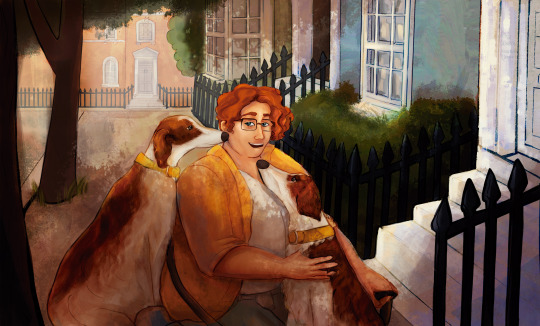
(lovely Martin Blackwood artwork by @hihereami)
The Magnus Archives fics:
My biggest series is the Love & Nonsense AU, which is a book publishing/bookshop AU with, as of today, over 250k words, two and a half long fics (the half is WIP), and several shorter fics both smutty and not smutty.
We've got one good solid JMart longfic, Love & Nonsense at Leitner Press, and lots and lots of TimGerry, including Hiding in Plain Sight.

The Sandman fics
These are mostly Dreamling fics, though there is a Gaulcienne fic I'm particularly proud of and a Johazikeen as well.
At the moment, my most popular Sandman fic is Music When You Speak, a human AU, where Dream is lead guitarist for The Endless and Hob owns a record store. There are also lots of podfics, smutty one-shots, and Tumblr ficlets.
-------
There's also literally just this one Malevolent fic, but that may change. 😉😉😉😉😉
-------
Aaaaand more original fiction, subscription edition!

Someone to Build Me Up
A weekly MM serial on Ream and Patreon for $5/month patrons, and on Kindle Vella using their token system. (Psp psp psp, Sandman fan friends, this is very Dreamling coded.)
Reeling from a breakup, English professor Zack Carter is trying to pull himself together for his sister's wedding. His recovery includes hiring sexy, snarky, and multi-talented Marcus Berens as his personal trainer. When Zack finds out his ex has chosen his former bully as her wedding date, Marcus agrees to play the role of Zack's boyfriend. But despite a shared love of theater, neither of them are good at pretending their feelings are just an act.

You're the Most
The second book after Love, Lies, and Cryptids, posted in serial form every other week (for now!) on Patreon and Ream for $10/month patrons. (Tim/Gerry lovers, this one's for you. 😉😉😉)
Andie Silvana is stretched as thin as they can get running Blossom & Crow—a goth bookstore and community hub—all by themself. Fresh from rage-quitting his job, Evan Brooks, fears falling back into a life he doesn’t want before he figures out what he does. Both notorious flirts, the two come together like an electrical storm. But what starts out as a little steamy fun may turn into exactly what they need.
Please enjoy! I enjoy good-natured yelling, so don't be shy about saying hello!
Lastly, you can sign up for my mailing list as well for the latest original fiction updates. Thank you!
#ml nolan#the magnus archives fanfic#the sandman fanfic#ml nolan masterpost#m/nb romance#romance books#serialized romance#dreamling#gaulcinne#jonmartin#timgerry#love lies and cryptids#gay romance fiction#lgbtq+ romance
30 notes
·
View notes
Text
Fellow Travelers Rewatch Party | episode 1
Content warning: NSFW, strong language (likely)
This will be mostly a reaction and based on observations, given the knowledge about how things will unfold in later episodes.
What a perfectly beautiful way to start a show! The song flows amazingly with the cinematography and it encloses around the viewer like a warm hug, simultaneously delivers an underlying sadness, the lyrics preparing us of what lies ahead, a tragic love story that yearns to end happily, but won’t. It sets the mood and gently announces with a toe-deep dive that we’re about to journey backwards into a different decade. I love it! <3 (song: Stevie Wonder - If It’s Magic)
Marcus drives down the sophisticated suburban lane to meet Hawk in his perfectly cultivated family nest to hand over the package, according to Tim’s wishes. It’s sweet to know that he supports and protects Tim, because - as we find out later - he knows Hawk and his shenanigans the best.
Promotion party! Lucy and Hawk certainly know lots of people. Also, how many grandchildren do they have? I’d assume the other kids are probably the children their guests brought to the party, playmates of his granddaughter, right? No, wait, Lucy says „grandkids“ - so there are more than one?
Lucy: The grandkids are going to miss Hawk so much when we got to Milan. I don’t know what Kimberly’s going to do. - Hawk’s a beloved granddad.
Hawk: Well, she’ll ship them over in the diplomatic pouch. - The sass and wit never ceases.
Lucy: I almost gave up my dream of moving to Italy with the man I love.
Hawk: In the end, sh settled for going with me. - OH. The foreshadowing, the ambiguity. The HURT. For BOTH of them. My heart.
Did we ever find out how and when Lucy got to meet Marcus, though?
Marcus is sooo distressed about the AIDS situation killing all his friends, his beloved ones around him. I want to hug him!
Marcus: Tim doesn’t want to hear from you. He asked me to make that clear. - It’s another verbalisation of ‚Promise you won’t write’, Tim might have been hoping to hear from Hawk. Then again, of course Tim made sure Hawk will receive the paperweight. It’s the same ‚message‘ that Hawk delivered to him when he left it as a gift before betraying him - to let go. Tim wants to let go.
Flashback to 1952!
Tim ordering a glass of milk, almost snapping at Hawk for questioning his beverage of choice.
The beginning of the milk odyssey…
What a beautifully shot scene, the lighting, the music / score, the switch between scenes, paralleling the scenes between society conform married life of a ‚straight’ man and cruising through park bathrooms - the double life of Hawkins Fuller and preparing us for what lies ahead, truly marvellous.
I think that’s the roughest and most mechanical, unemotional sex we’ll see in the show. Hawk literally punches Eddie like a donkey.
Hawk: Milton. But my friends call me ‚uncle Milty‘ - Cracking up. Hawk, be serious.
Hawk doesn’t care about your little life, Eddie. He got what he wanted. He doesn’t give him his number. Important detail since that’s the first information he receives from Tim, already going one step further than he does with Eddie here.
The small „:|“ glance Mary and Hawk share in reaction to Miss Addison’s disapproval of commies, only the eyeroll and irritated sigh missing. Love Hawk’s and Mary’s interactions and friendship overall, so entertaining how they’ll constantly talk ambiguously.
Tim and Hawk first meeting at the park!
Tim: I have a degree in political science and history. I think I should aim a little higher, don’t you? - Oh, baby, you should! Too bad he’s never got to indulge in a profession that fits his education. But then again, maybe it’s for the best that reoriented his career and found a better path for himself, for his eagerness to be politically vocal! He still became a spokesman.
Tim flusters as Hawk inquires him about memorising his biographical entry! His reaction is sooo endearing. He’s already so smitten.
The banter between them!
Hawk: Down boy. - And so the dynamic starts.
Hawk: Perfect. I’ll spend the afternoon picturing you kneeling in prayer. - Pants flew to the moon, ovaries and peepees exploded!
Smith: Your plan, me in the White House in eight years. - Hawk intending to ‚manipulate‘ his mentor’s career, making him president.
Tim and his little cupboard where he hangs his very few white socks and pants. D: Also, he is a plant person! In this apartment as well as in his 80s one he own quite a bunch of greens.
Jean: … could stand to improve his spelling. You’ll have to do this one again. - Is Tim dyslexic?
The book Tim bestows Hawk with, as a present for getting the job is titled ‚Look Homeward, Angel.‘ Angel. Skippy, in the book apparently, is derived from an angel’s name. So maybe that’s Hawk’s inspiration in the show?
Hawk visits Tim for the first time and wants to take him out for dinner! So much to the ‚we NEVER eat in restaurants!‘-complaint in episode 3. Hawk wanted to take him out to a restaurant before. <3
Tim is very, VERY drastic in his political views, which is a bit concerning, but also understanding, given the historical context.
Hawk asking for consent before lifting Tim to his feet and undressing him, love it.
Tim showing Hawk the family photo album.
Tim: This is uncle Ronald, the drunken designated hopeless sinner of the family.
Hawk: I think you’re giving uncle Ron a run for that title.
Tim: Thanks to you… - and the little smirk, I can’t.
Mary: How are you enjoying ‚Look Homeward, Angel‘?
Hawk: Immensely. Although I have trouble finishing a book before I wanna start another. - he says while he eye-flirts with the next guy standing closeby, oh Hawkins.
Eddie making a scene out in the open, in the hallway…That is very, very awkward and risky and Eddie should know that, not a clever move. I feel for him, for what happens to him later on, but he had it coming, unfortunately. He should’ve let it go when Hawk made clear he doesn’t want further contact during their encounter and then clearly signifies he doesn’t recognize him. It’s like having an ONS or anonymous sex, the rules about how this will go and what it entails are set.
Tim toe-sucking bj-ing himself to the fancy party is still wonderful and he must’ve done a spectacular job to convince Hawk. Also, he’s wearing Hawk’s coat here. Wonder if they acted out the little monologue and Tim really went there with the taste of him in his mouth.
Alsop: My wife says the aroma is somewhat reminiscent of feet. I can promise you it tastes perfectly marvellous. - This is a very feet-heavy episode.
Lucy and Hawk share such entertaining banter moments, I wish they could’ve stayed just really good friends, without all the heartbreak and pain.
Bringing up Lucy is a red rag to Hawk, but Tim just can’t help it. These two have severely different perspectives on life at this point and Hawk told Tim multiple times that he can’t give him what he wants, the life he dreams of, that they can just enjoy these occasional moments of fun together, which of course isn’t enough for Tim, who craves for everything straight couples have, to date his partner openly. It’s not possible in this environment and Tim acts very stubborn and naive here. He is also constituting a great risk for Hawk, who doesn’t shove him away just yet, which is surprising, giving what we’ve seen of him and how cautious he wants to be, leaving no traces endangering his career.
After hearing McCarthy’s speech it’s actually so disturbing and irritating to know that Tim holds onto this man’s ideals so firmly.
Shout out to the beautifully nuanced OST created by Paul Leonard-Morgan.
And that’s it for this episode.
19 notes
·
View notes
Text
anne rice, pseudointellectual extraordinaire, managed to squeeze into the tale of the body thief references to: "sailing to byzantium" and "the dolls" by william butler yeats, a tale of two cities, anna karenina, the postman always rings twice, lolita, "the tyger" by william blake, a tree grows in brooklyn, "the thing on the doorstep" by h.p. lovecraft, "eyes of the mummy" by robert bloch, goethe's faust, jeffrey burton russell, mircea eliade, john milton, marcus aurelius, hart crane, george bernard shaw, diogenes, thomas aquinas, jacques maritain, pierre teilhard de chardin, dostoyevsky, albert camus, and john keats. at one point lestat uses the alias "sebastian melmoth," which was a pseudonym used by oscar wilde, itself a reference to melmoth the wanderer by charles maturin. later lestat goes by the last name "wilde." he also references othello and at one point asserts that he is "not time's fool." the alias "sheridan blackwood" might be a reference to sheridan dufferin given rice's interest in art, and i assume she got "alexander stoker" from bram. the movies that appear or are referenced are suspicion (1941), vice versa (1988), all of me (1984), the company of wolves (1984), beauty and the beast (1946), the dead (1987), it's a wonderful life (1946), and body and soul (1947). characters see or reference art by rembrandt (specifically the syndics of the draper's guild), picasso (three separate times), willem de kooning, jasper johns, andy warhol, monet, and edward hopper. there's also a reference to the actor rutger hauer. uhhh i think that's it but holler if you caught one i didn't
#iwtv#vampire posting#i'm sorry i don't know why i did this. there's no use for this. i just love making lists#the show is really keeping in the spirit by making the paintings in the background/so many of the books identifiable#interesting that all the movies are either from the 80s (the last 10yrs relative to when the book was written) or the 40s#(anne rice's early childhood)
31 notes
·
View notes
